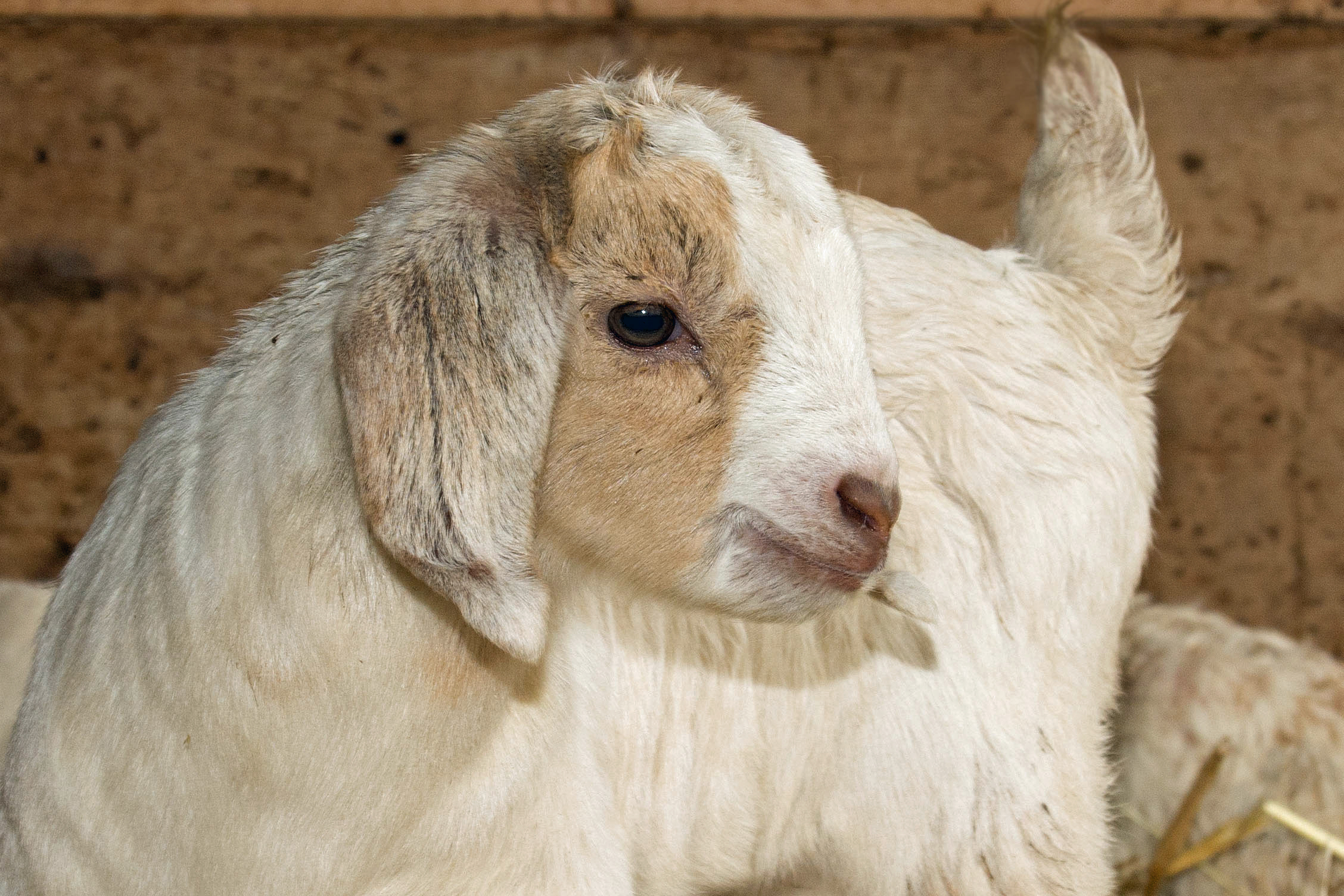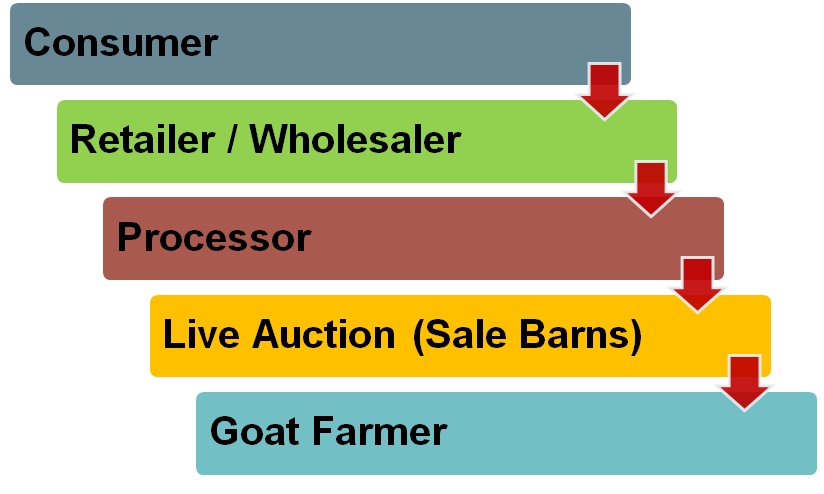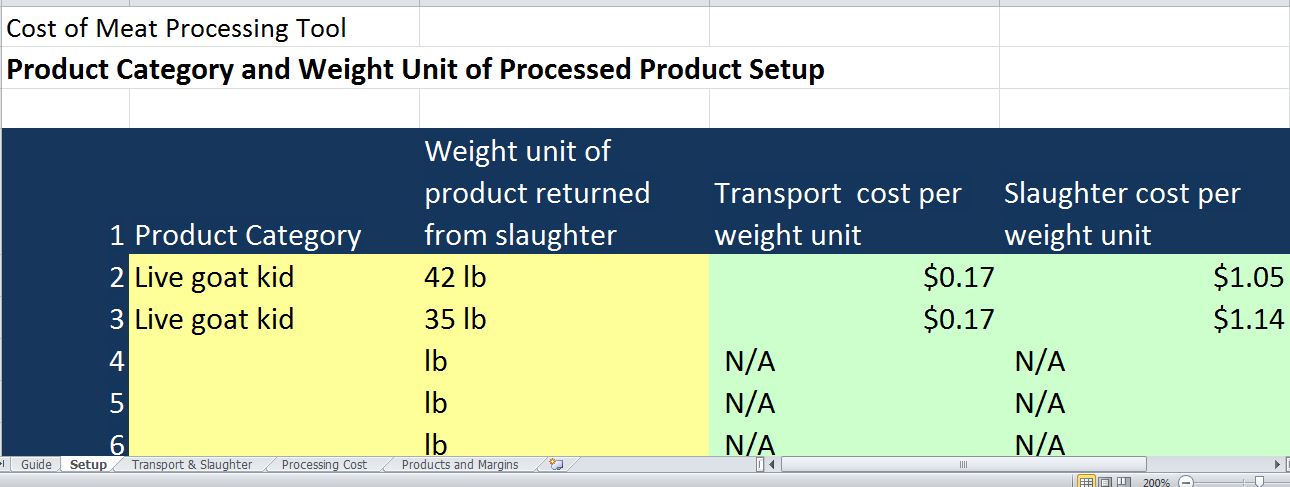Jillian Craig, Small Ruminant Specialist, Ontario Ministry of Agriculture, Food and Rural Affairs

When making the decision on where to market meat goat kids, a variety of options exist. It is important to keep in mind that the consumer is ultimately the person who will be purchasing your product. In the value chain found in Figure 1, the consumer is at the top of the diagram as they truly drive the system. With no end user, there would be no demand for the product. In the simplified value chain diagram, this is only one example of how a value chain might work. There are different market methods depending on individual preferences.
Figure 1: An example of the value chain

Marketing methods for meat goats include:
- Live auction
- Direct to processor
- Direct to the consumer (farm gate, farmers’ market, online, etc.)
- Direct to the retailer (restaurant, grocery store, etc.)
- Sell breeding stock
- Sell to a feedlot
- Develop and participate in a value chain group
With this list in mind, it is essential to weigh the advantages and disadvantages for each marketing method. Factors to take into consideration include, time you have to devote to marketing, distance to market, transportation options (how will you get them there), trucking costs, other costs such as advertising if selling direct, payment method and risk to name a few. Some highlights and items to think about are presented in the most common meat marketing methods below.
Live Auction
In the Ontario goat industry, live auction is the most common marketing method utilized. Selling through a live auction can be a good option for marketing quality meat goat kids, as typically the volumes of meat kids coming through the sale barns are low and the demand for kids is high. A live auction sale is easy in terms of marketing as there are usually sales every week of the year where the animals are transported to the live auction and sold. The major risk with this method is the unknown price received per animal. While there are highs and lows throughout the year, when shipping animals it is sometimes beneficial to try and market several times throughout the year to receive an average price overall rather than the extreme high or low prices.
Depending on your location in the province, a list of licensed livestock auction markets can be found at here.
Direct to Processor
Often, this marketing avenue can be overlooked. There may be opportunities to partner with a processor or have an agreement with the processor to directly supply goat kids to the plant. If an agreement can be reached between the farmer and processor this marketing method can be a good option as the goat farmer will know the price in advance, date of shipping and how many will be marketed. This marketing method requires consistent communication between the farmer and the processor. It can be time-consuming to ensure an agreement can be reached between both parties.
A list of abattoirs can be found below:
Direct to Consumer or Retailer
Marketing direct to either the consumer or the retailer can be very time consuming and can be costly; depending on advertising, farmer’s market stand fees, extra transportation considerations and time spent trying to sell product to name a few. Pricing product accordingly is the key to making a profit. Consideration should be given to pricing the product either by the kilogram/pound, by the cut or a flat rate per carcass. Price out chevon in several different ways and compare to the live price at the live auction. The price should reflect advertising, extra transportation, slaughter, cut and wrap and marketing costs associated with direct marketing. For more information, OMAFRA has a cost of meat processing tool, an Excel sheet which allows an individual to calculate the cost of meat processing. An example of the tool can be found in Figure 2. The full tool can be found here.
Figure 2: OMAFRA Cost of Meat Processing Tool – Example Scenario

Selling directly to the consumer or retailer can be very rewarding if the individual enjoys talking to the public about the farming operation and is a great way to produce a value-added product.
When selling direct to consumer or retailer, any meat or meat product sold or distributed in Ontario must come from inspected sources. These sources include a provincially licensed meat plant (abattoir or free-standing meat plant), a federally registered facility or other approved imported sources. The sale or distribution of uninspected meat is illegal. For more details, please refer to the OMAFRA Factsheets entitled, ‘Ontario’s Meat Inspection System’ here and ‘Your Responsibilities Under the Meat Regulation’ here.
For more information on direct farm marketing please refer to the following OMAFRA factsheets:
Direct Farm Marketing in Ontario
Direct Farm Marketing Business Resources
Resources on raising meat goats from Ontario Goat:
